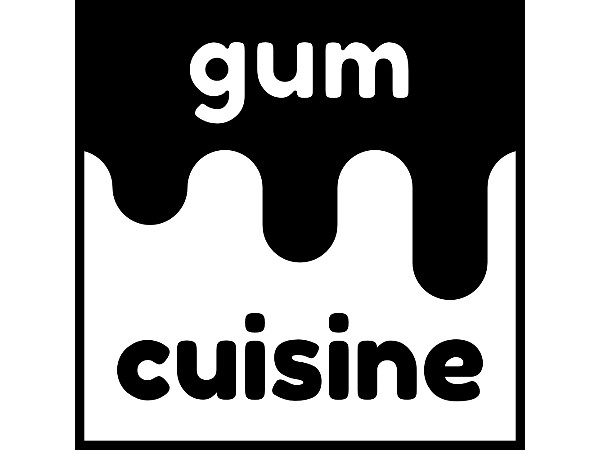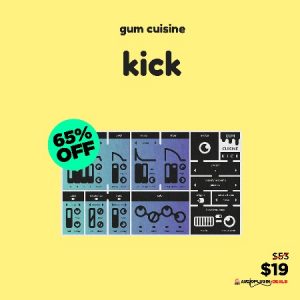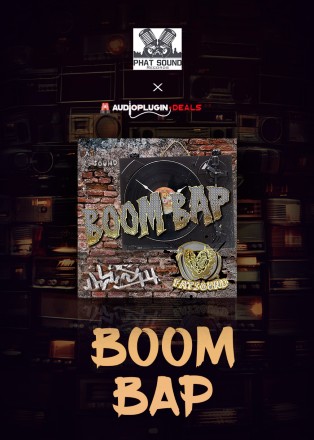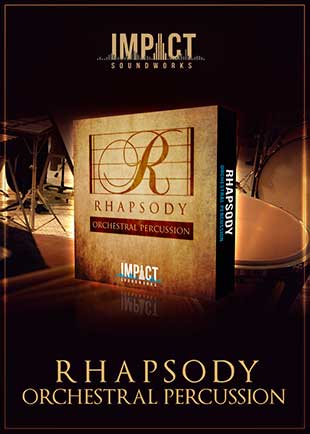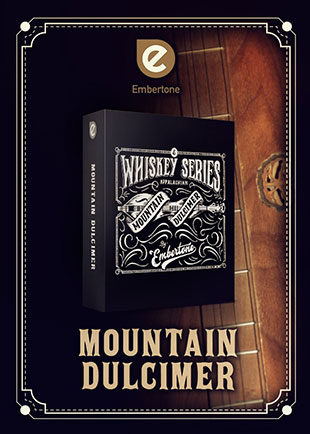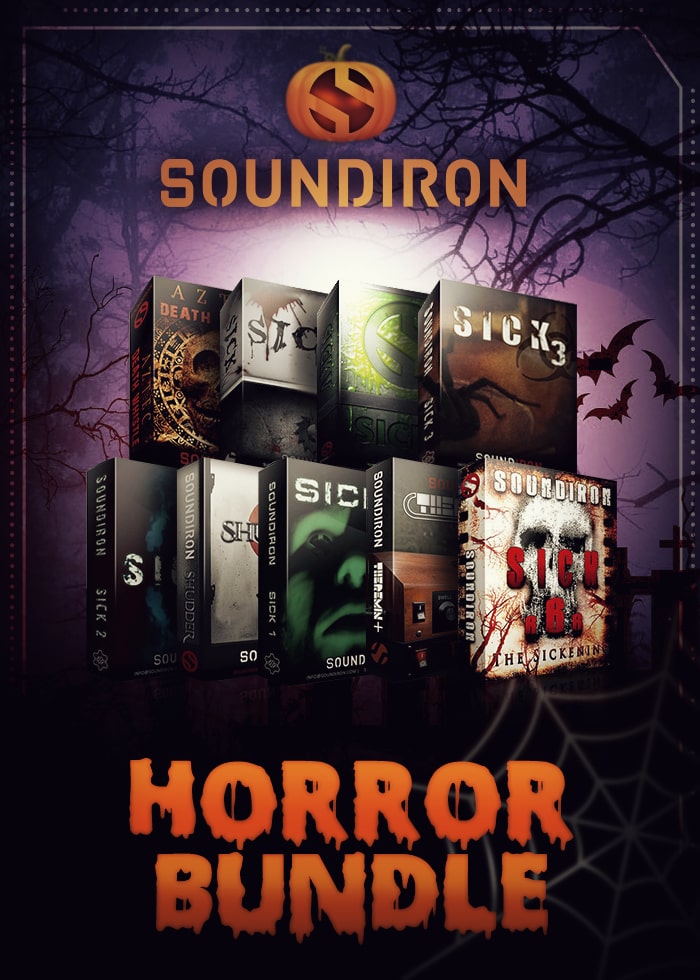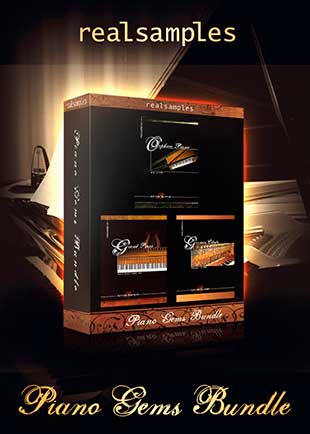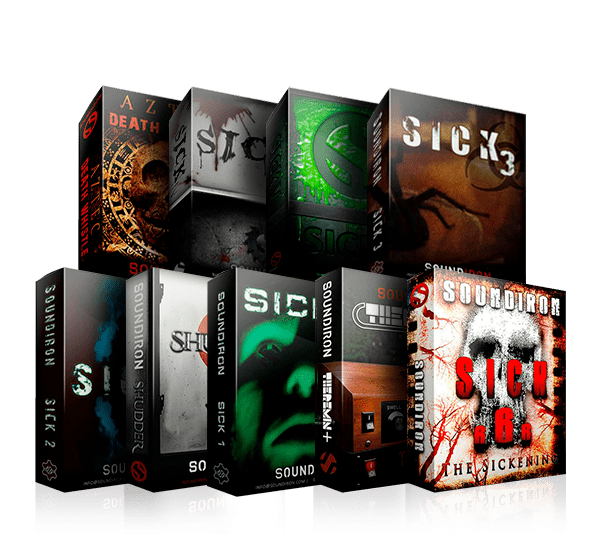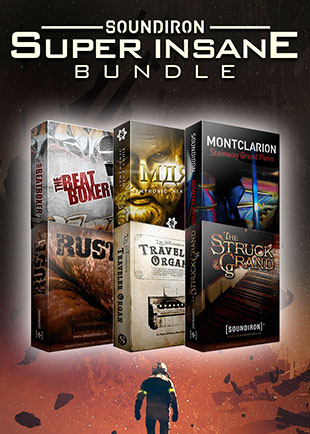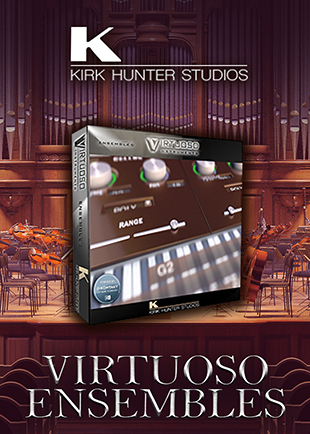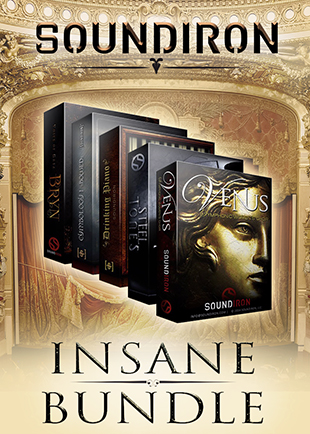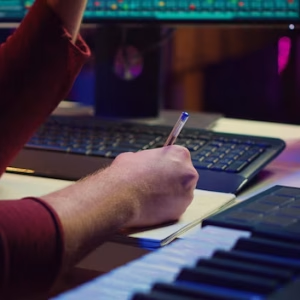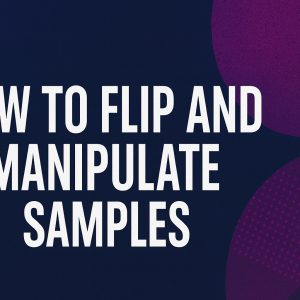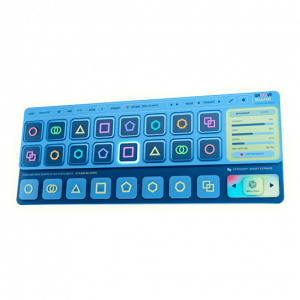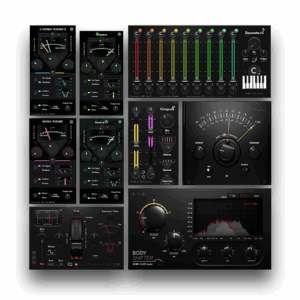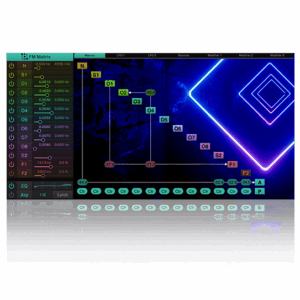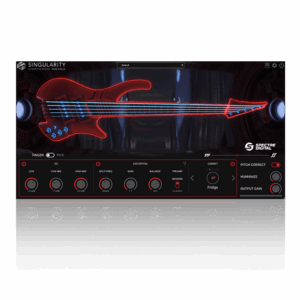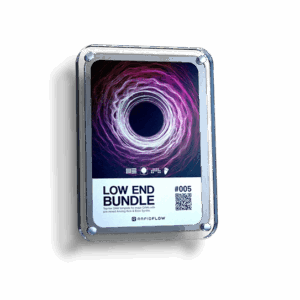Gum Cuisine Kick is a Brand New Drum Kick Synthesizer Plugin by Gum Cuisine, owned and operated by Sebastian Pflügelmeier. We asked him about his plugin and the best ways to use it in this interview.
Here’s A Quick Overview Of Kick

Check out the full features and Specs here
Sebastian Can You Tell Us A little About Yourself and Gum Cuisine?
Gum Cuisine was founded at the beginning of this year, but a few things happened before that.
In 2021, I started working on a small side project. I wanted to create a synthesis environment for the web. It wasn’t my first audio programming project, but it was the first one that ended up becoming something serious.
After a while, I turned it into a VST plugin, and after that, it slowly took shape as a kick drum synthesizer. That was the point where I first thought that this was something I could potentially sell. After some thought, I quit my job and started working full-time on my plugin.
In Austria, where I live, there is a program where the government will fund you for six months to start a business. So I applied for it, and after 6 months, I finished my first plugin and released it in early 2023. That’s how it all happened.
Gum Cuisine Sounds Tasty. How Did You Go About Choosing This Name For Your Company?
So basically, it’s a silly working title that stuck. Still, a lot of my friends liked it, so I decided to keep it. How I came up with it, I’ll keep to myself for now. When I’ve sold my millionth plugin, you can ask me again. I promise, then I’ll tell you 😉
Do You Produce Music or Play Any Instruments?
I’ve been making music in one form or another all my life. Around 2012, I started producing electronic music, and that’s when I discovered my love for sound design and synthesis.
Over the years, I’ve also played various instruments, mainly drums, guitar, and keyboard. I wouldn’t say I’m an expert at anything, but I’ve tried many things and have a broad musical understanding.
Taking The Role Of Plugin Developer, Do You Still Have Time To Create Music?
At the moment, I don’t really have time for music production, apart from testing my own plugins and creating demo tracks for Gum Cuisine. Still, I hope to have more time for it in the future, especially because I think it’s hard to be good at audio software development if you don’t use audio software.
I would say that about half of my work time goes into plugin development, which is mostly software development, but also UI design and DSP design/sound design. So 20-30 hours a week.
The rest goes to all other aspects of running the business, especially marketing. Being relatively new to audio plugin development, a lot of my work is also experimentation and figuring things out.
What Sets Gum Cuisine Kick Apart From The Rest?

I think there are a couple of factors. First of all, it’s super simple and intuitive. You do not need a Ph.D. in synthesis to create the sound you want. Every parameter available to the user is carefully chosen and has an actual influence on shaping the kick drum sound.
There are no hidden menus, and everything fits on a single screen.
Also, the fact that it is pure synthesis makes it more flexible than sample players. And let us face it, we have enough sample-based drum instruments already.
The fact that it has its own unique sound and is not trying to recreate retro drum machines is also a big selling point.
Don’t get me wrong, 808s or 909s sound great, for example, and there are great plugins that can emulate them brilliantly. It’s just been played to death.
Why Use A Kick Drum Synthesizer When There are Tons of Kick Samples Out There?
I would say there are three reasons:
- Customize your kick drum so that it fits perfectly into your mix. With samples, you have limited options to change it. You often have to build your beat around the kick drum sample. With a synthesized approach and a variety of parameters, you can fine-tune your kick drum until it fits perfectly in the mix.
- Each sample is a sound that has been there before. With gum cuisine kick, you can create kick drums that have never existed before. Uniqueness can be a great selling point, and with gum cuisine kick, you have just that at your fingertips.
- Searching through sample libraries can be tedious. This may be a matter of personal preference, but I hate digging through hundreds of sounds before I find one I like. On the other hand, it’s fun to design your own kick drum. It feels much more creative and engaging.
Top 10 Tips For Using Gum Cuisine Kick
- If you haven’t yet purchased Gum Cuisine kick. Try the demo version. The only limitation is that you have fewer parameters you can access directly and have fewer presets. No time limit and no ducking/white noise!
- Play around with all the parameters! You’ll be surprised by what sounds you can get.
- Gum Cuisine Kick was designed to make it easy to find good kick drum sounds. Try to experiment and try out what you can achieve!
- The resonance and body sections are very sensitive to what the tone, noise, and click sections are doing. Play around to see how they affect each other!
- Try out the presets! There are some really cool sounds in there. Also, don’t forget to tweak the parameters when you find a preset you like.
- Try creating sounds with the volume turned down. Even though this is probably the most important section, you’ll be surprised what you can achieve without it.
- Don’t forget to use the note input. It’s great for melodic kick drums. You can also experiment and use it as a polyphonic synthesizer.
- If you have a MIDI controller, try finger drumming and make your kick drums more expressive with note velocity mappings! Try out the different modes and see how velocity affects your sound.
- Layer Gum Cuisine Kick with other sounds. Even though it is designed as a complete kick drum package, it can be very interesting to mix it with other sounds.
- Change the size of the UI! Many people tend to overlook the fact that you can resize the plugin window in the lower right corner.
What Are Your Plans For The Future?
So my plan for this year is to release three more drum plugins. It’ll be a hi-hat/cymbals plugin, a snare/clap plugin, and then a more experimental percussion plugin.
My long-term plan is to release the product I mentioned earlier. It’s more than just a plugin, it’ll have some collaborative features, and it’ll definitely be interesting, but I don’t want to reveal more than that right now.

